Hydrangea "Magic Fire": description and cultivation
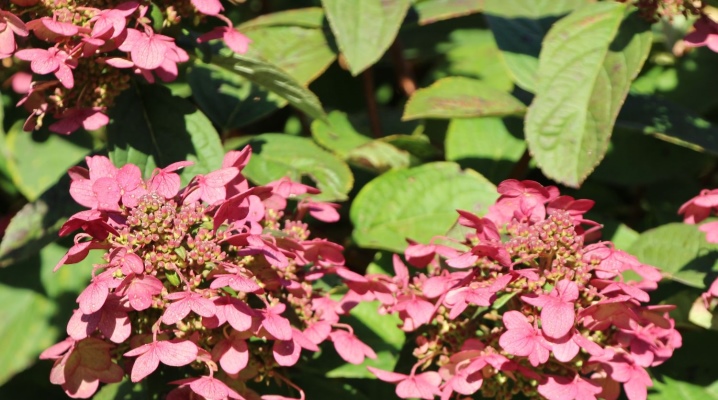
There are many beautiful ornamental plants. Hydrangea "Magic Fire" amazes with its brightly flaming profuse flowering. Even single-planted bushes give the modest landscape an elegant festive look.
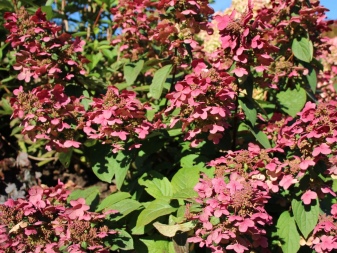
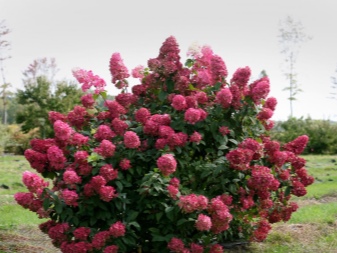


Peculiarities
Magical Fire is a panicle type of hydrangea. When describing this variety, first of all, the main characteristic feature of the plant is noted - the unusual color of the flowers, smoothly transitioning from light, almost white tones to a fiery purple-pink color. This gives the shrub an unusually attractive appearance.
Hydrangea "Magic Fire" is a compact shrub that does not exceed two meters in height and is characterized by fast and intensive growth. Strong and sturdy branches are able to withstand heavy, lush buds. The dense but compact crown has a rounded shape. The branches are covered with leaves of an ovoid or ellipsoid shape of a thick dark green color, against which the inflorescences stand out brightly.
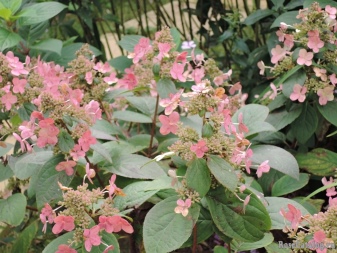
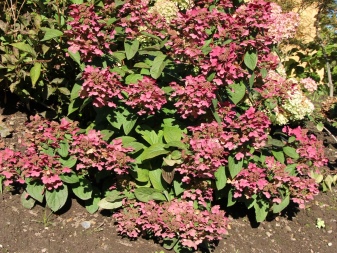
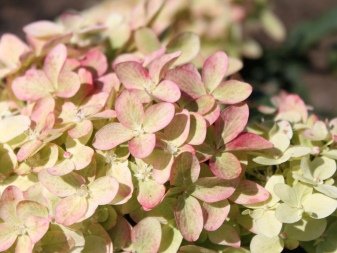
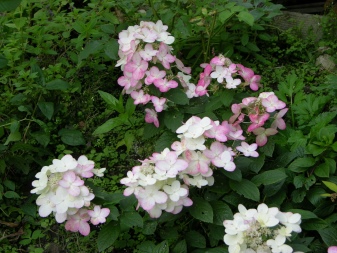
Large paniculate cone-shaped inflorescences, reaching 20 cm in length, consist of many small flowers. The saturation of the color of pink-purple flowers is determined by the acid-base composition of the soil. The variety is distinguished by long flowering, which begins in mid-summer and can last until late autumn.
At the beginning of flowering, the inflorescences have flowers with white petals, painted at the edges in pink. Gradually, the pink tone acquires an increasingly saturated shade, becoming burgundy-purple, and stains the entire surface of the inflorescence.

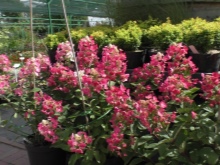
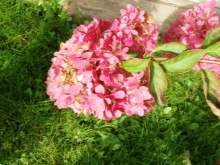
Landing
Before planting a hydrangea, you should choose the right planting site: not only its active growth depends on this, but also the abundance of flowering. The superficial root system of the variety is characterized by strong branching of roots, which can spread over an area exceeding the size of the plant's crown. Therefore, it is not recommended to grow hydrangea next to other large trees and shrubs, otherwise it will lack nutrition and moisture.
It is also not recommended to plant it near flower crops that need digging and digging for the winter (tulips, hyacinths, gladioli), so as not to damage the hydrangea roots that are close to the surface. This variety grows best on loose, nutritious soil. The most suitable in composition are acidic or slightly acidic earths. Alkaline soil is bad for plant growth. The variety prefers well-lit areas, protected from the wind, but inaccessible to direct sunlight. Hydrangea will grow well in partial shade.
The best time for planting in the ground is considered early spring before the buds swell or early autumn, so that the plant has time to root well before the cold weather.
Wells are prepared in advance (14-20 days) before planting. They should have approximately the same dimensions - length and width of 0.6 m, depth - 0.4 m, the distance between the pits is 2-3 m. First, drainage is laid in the hole, on top of which the prepared substrate is poured. It contains nutrient soil and peat in 2 parts, river sand and humus in 1 part.
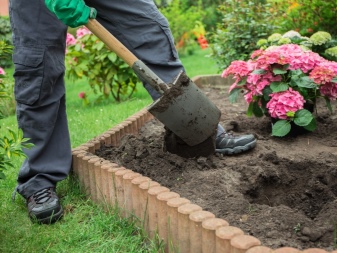
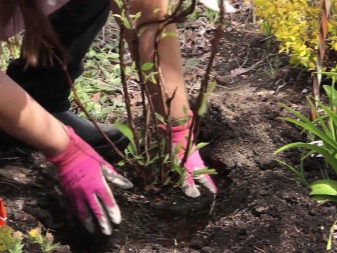
Landing is carried out in this order.
- A day before planting the plant, 20-30 liters of settled water are poured into the hole so that the moisture soaks the soil well.
- The root system of the seedling should be well spread and the end of the root shoots should be cut off by about 4 cm.
- Having placed the plant vertically, you need to carefully and evenly distribute the roots in the hole, and then sprinkle with soil. The root collar and the top layer of the earth should be at the same level. It is impossible to deepen the neck.
- Then the soil near the seedling needs to be compacted and watered again.
- The soil in the hole is covered with mulch from wood chips, bark, needles. It will retain moisture and inhibit weed growth.

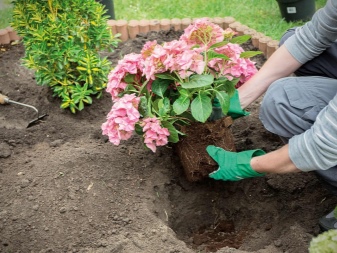
How to take care of it properly?
It is impossible to grow a healthy, beautiful and abundantly flowering plant without proper care. The peculiarities and subtleties of caring for the "Magic Fire" hydrangea are in the implementation of such rules.
Proper watering
Water panicle hydrangea regularly and abundantly. During the formation of buds and at the beginning of flowering, the regularity of watering is 2-3 times a week, using irrigation of the entire bush as necessary. Water for irrigation is preliminarily defended for 1-2 days. Watering is recommended either in the morning or in the evening; in the afternoon, you can cause sunburn of the crown leaves. In a drought, you need to water more often, maintaining the moisture of the earth, preventing it from drying out. After flowering, you can water it once every 7 days, but the volume of water should be quite large - up to 2 buckets under a bush. It is also required to moisten the soil around the bush (within a radius of up to 1.5 m). The soil under the plant should always be moist. Hydrangea tolerates well even a short stagnation of moisture in the soil.
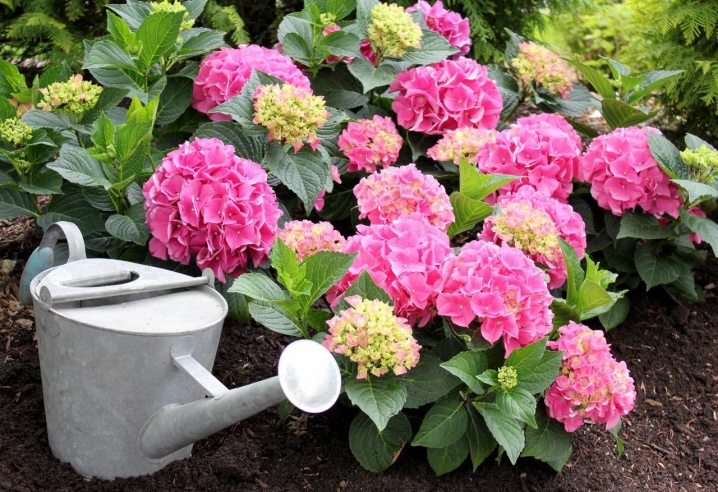
Top dressing
Like any plant, hydrangea needs fertilization. Top dressing is carried out 3-4 times during the growing season, using both mineral and organic fertilizers. It is more effective to apply organic fertilizers in early spring; liquid manure can be used. Organic matter has a beneficial effect on the active growth of green mass.
During the formation of buds and the development of inflorescences, the soil needs to be fed with potassium-phosphorus fertilizers: about 80 g of superphosphate and up to 45 g of potassium per sq. m. They contribute to the duration and splendor of flowering.
It is also recommended to water the hydrangea with a weak solution of potassium permanganate (0.5 g per 10 liters of water): it strengthens the branches and protects against diseases. If necessary, the soil is acidified using ferrous sulfate, peat, needles. Complex top dressing is applied in August, they are necessary to prepare the shrub for winter.
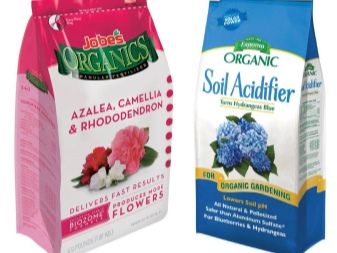
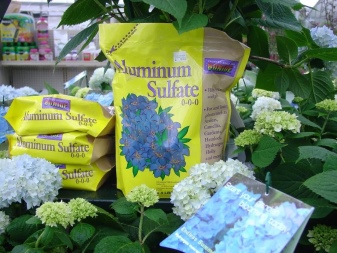
Pruning
It is also needed by hydrangeas. The first pruning is done in early spring, before the start of sap flow. After examining the shrub, all damaged, weakened, thin and crooked branches are identified and removed. Dry cuttings should not be pruned off as the Magic Fire hydrangea can regenerate.
Pruning is also done after the shrub has faded. All dry flowers are cut off. Damaged and dry branches are also subject to removal. Young bushes need formative pruning. It is done in order to obtain a large number of powerful shoots. A small bush with 2-3 short branches can be cut to a height of 25 cm to full buds.
It is recommended to cut off large plants by 1/3, while cutting off underdeveloped and damaged processes. To achieve abundant flowering, it is necessary to cut off almost completely the shoots of the last year, and for the intensive development of the shoots, they make easier pruning.
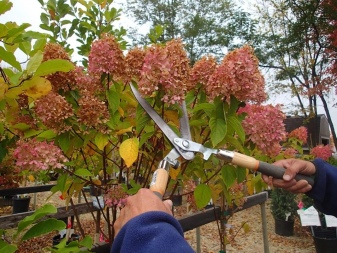
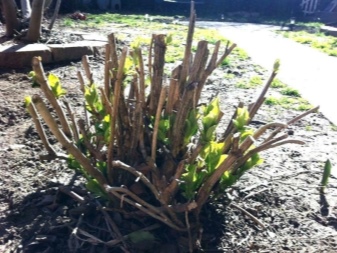
Preparation for wintering
The variety is quite frost-hardy and tolerates moderately cold winters well. In regions with such a winter, the plant does not need to be insulated and you can limit yourself to the usual mulching of the soil under the bush. In northern regions with harsh winters, hydrangea should be insulated. This is done before the onset of cold weather in late autumn. The branches of the bush are tilted to the ground and covered with a non-woven film, securing it at the bottom.


Reproduction methods
There are several ways to reproduce paniculate hydrangea.
Cuttings
For cuttings, you can use shoots cut during spring pruning, or cut off cuttings from the shoots of a given year. Shoots are divided into cuttings so that each has 4 pairs of buds.Before planting, they are first placed in Kornevin's solution for 2 days.
Then the cuttings are planted in loose nutrient soil, deepening into the soil by 2 buds. The planted cuttings should be covered with non-woven wrap. Periodically, the seedlings are watered with water, maintaining constant soil moisture.
The film is removed at the end of summer, when the heat subsides. Before the onset of cold weather, young seedlings are insulated with spruce branches. Young bushes are transplanted to a permanent place after 4-5 years.
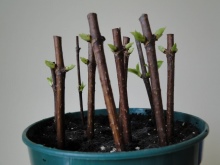
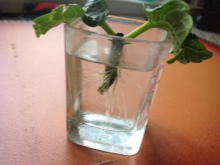
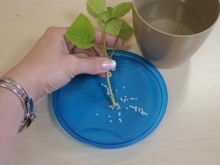
Layers
This method is quite effective and simple. It can be done in spring or late summer. The lower process of the bush must be tilted to the ground, in which a small depression is made beforehand. It is covered with fertile soil or peat on top and fixed with any heavy object (brick, stone) or an ordinary metal hairpin. The next year, the rooted shoots are separated from the mother bush and transplanted to the garden bed. The seedlings can be planted in a permanent place after 2 years.
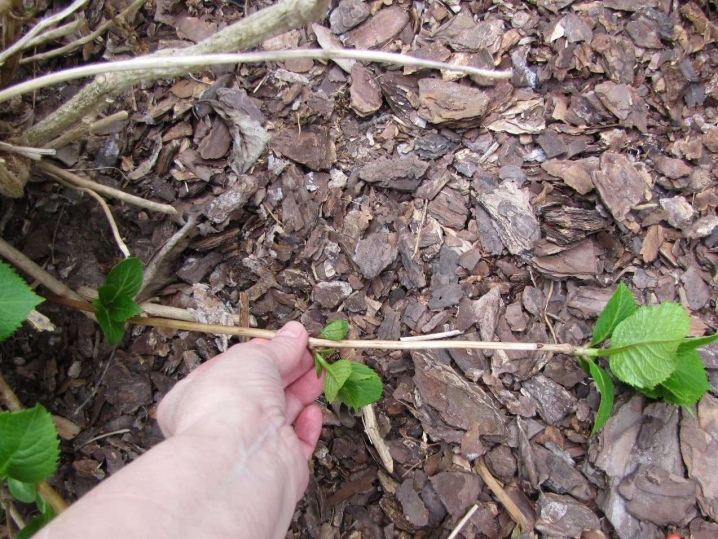
Seeds
Seed propagation is rarely used as it is a long and complex process. In addition, a seed-bred hydrangea loses its varietal qualities. Sowing seeds is carried out in autumn in shallow containers with a substrate of peat, sand and nutrient soil. There is no need to pre-prepare the seeds for planting.
The seeds are very small, so it is enough to scatter them over the entire surface of the moistened soil and not cover them with earth. Then the container should be covered with plastic wrap. The soil in the container should be watered regularly. After about 3 weeks, the seeds sprout. They are grown for 2 years, and can be transplanted into soil for 3 years. Seedlings during this time reach 30-40 cm in height.
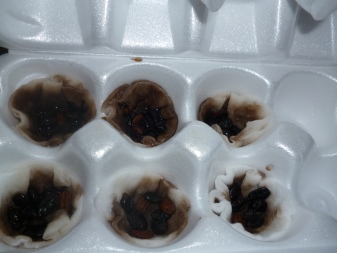
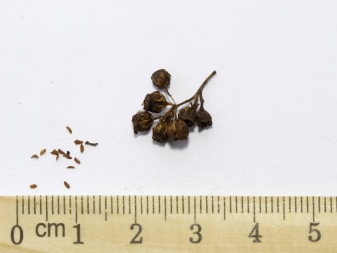
Diseases and pests
Hydrangea "Magic Fire" is resistant to diseases and insect pests. However, she can get sick if the rules of care are violated or if there are diseased plants nearby. The most common disease of this variety is powdery mildew. A symptom of the disease is the appearance of yellow and green spots on the leaves, and soon a gray bloom forms on the inside.
A diseased plant should be sprayed with a solution of Bordeaux liquid (100 g per bucket of water) or Fundazol (20-25 g per 10 l of water). With a lack of moisture and mineral fertilizers, hydrangeas first turn yellow, and then the leaves fall off. In this case, you need to increase watering and feed the shrub.
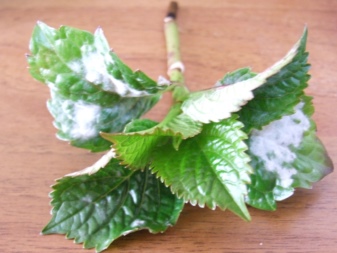
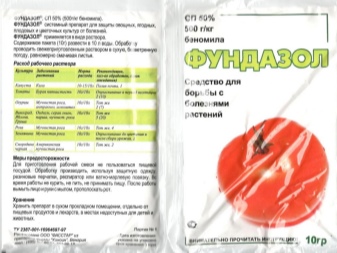
Of the harmful insects, aphids are the most dangerous. It sucks the juices out of the plant, forming sugary secretions that can cause other diseases. As a result, the shrub slows down and gradually dies. To combat aphids, spraying with garlic tincture is used, to which 50 g of household soap is added before use. Spray until the final disappearance of the aphids.
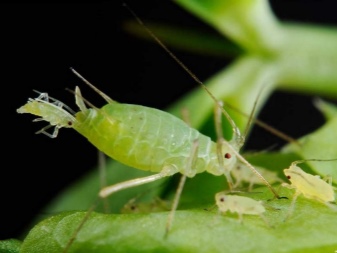
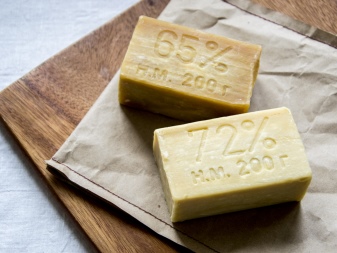
Another pest of hydrangea is the spider mite. The resulting thin web and yellow spots on the leaves indicate its appearance. To destroy the insect, use the drug "Fufan" (5 ml per 5 liters of water).
Mealybug is another plant pest. It can be easily identified by a waxy bloom of white cotton-like color. It is removed manually or using insecticides - Fitoverm, Fozalon, Aktara.



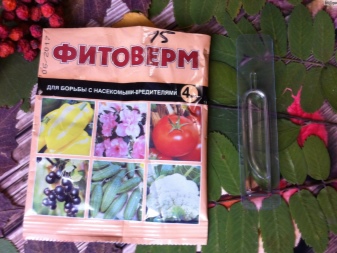
Use in landscape design
Magic Fire is a versatile ornamental shrub widely used in landscape design. Hydrangea is used both in single and in group plantings to decorate any site. It is planted near gazebos and verandas, terraces and in front gardens.
She can decorate group ensembles of trees and shrubs, will serve as a decoration for seasonal flower beds with other flowering plants. It also goes well with conifers and shrubs. This variety is often used in compositions with other types of hydrangeas (with oaky, serrated).
Its bright inflorescences look great against the background of white and variegated flowering plants in lawns and flower beds.
Hydrangea can also be used to form hedges and in multi-tiered mixborder plantings. When using hydrangeas of this variety, such a condition must be observed - it must be provided with sufficient space for growth.


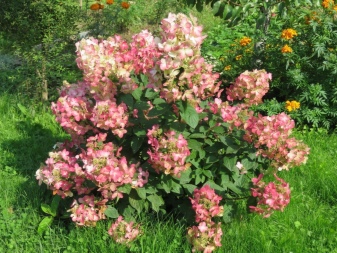
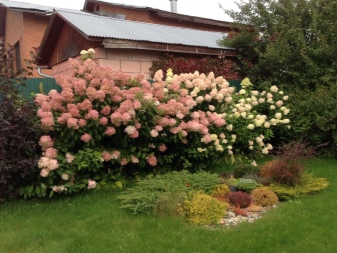
For the care, pruning and reproduction of panicle hydrangea, see below.



































































The comment was sent successfully.